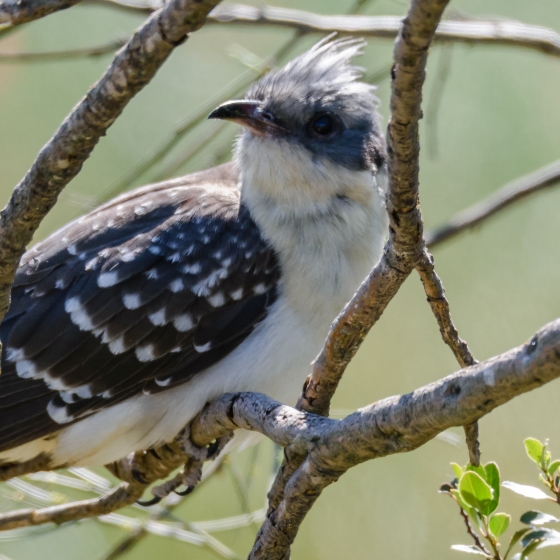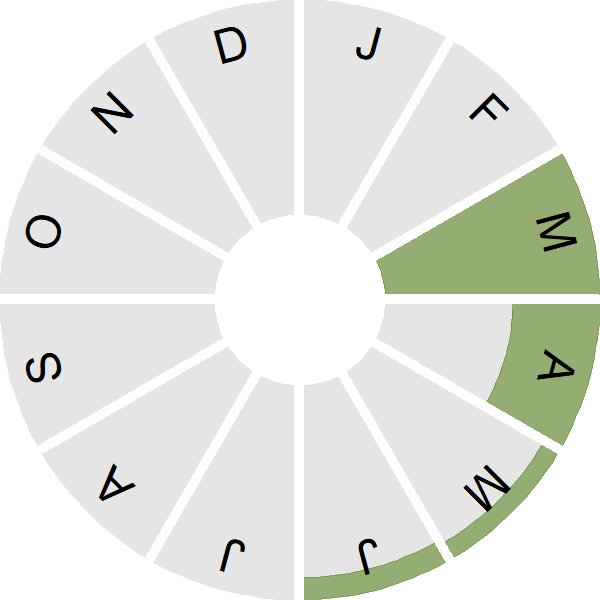Great Spotted Cuckoo

Introduction
A rare visitor from Southern Europe, this species is a brood parasite. Unlike our Common Cuckoo, however, the female Great Spotted Cuckoo will lay up to five eggs in a single nest.

Key Stats
Status and Trends
Conservation Status
Population Size
Population Change
Population trends of this scarce species are not routinely monitored.
Distribution
This species is a rare vagrant and was recorded during Bird Atlas 2007–11 as shown on the map.
or view it on Bird Atlas Mapstore.
or view it on Bird Atlas Mapstore.
European Distribution Map
Distribution Change
This vagrant is too rarely reported to map distribution change.
Change in occupied 10-km squares in the UK
Seasonality
Great Spotted Cuckoo is a rare vagrant, usually recorded in spring.
Weekly pattern of occurrence
The graph shows when the species is present in the UK, with taller bars indicating a higher likelihood of encountering the species in appropriate regions and habitats.

Movement
Britain & Ireland movement
Biology
Survival and Longevity
Survival is shown as the proportion of birds surviving from one year to the next and is derived from bird ringing data. It can also be used to estimate how long birds typically live.
Classification, names and codes
Classification and Codes
- Order: Cuculiformes
- Family: Cuculidae
- Scientific name: Clamator glandarius
- Authority: Linnaeus, 1758
- BTO 2-letter code: UK
- BTO 5-letter code: GRSCU
- Euring code number: 7160
Alternate species names
- Catalan: cucut reial europeu
- Czech: kukacka chocholatá
- Danish: Skadegøg
- Dutch: Kuifkoekoek
- Estonian: harakkägu
- Finnish: harakkakäki
- French: Coucou geai
- German: Häherkuckuck
- Hungarian: pettyes kakukk
- Icelandic: Dílagaukur
- Irish: Mórchuach Bhreac
- Italian: Cuculo dal ciuffo
- Latvian: liela cekuldzeguze
- Lithuanian: didžioji kuoduotoji gegute
- Norwegian: Skjæregjøk
- Polish: kukulka czubata
- Portuguese: cuco-rabilongo
- Slovak: kukavica chochlatá
- Slovenian: copasta kukavica
- Spanish: Críalo europeo
- Swedish: skatgök
- Welsh: Cog Frech

